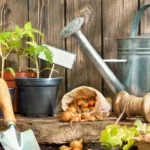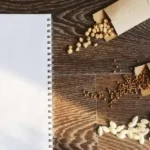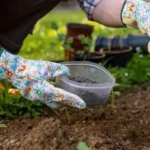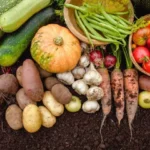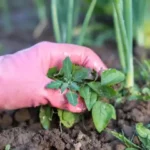As a vegetable garden enthusiast, you understand the significance of how often to water garden vegetables for your plant’s growth, development, and resulting harvest. However, finding the balance between overwatering and underwatering can be challenging. And so, to maintain a healthy garden, it’s essential to understand the do’s and don’ts of watering. Let me help you navigate these crucial factors to help keep your vegetable garden hydrated for optimal growth and productivity.
Make sure to water your vegetable garden appropriately and avoid either overwatering, which can cause soil saturation, or underwatering, which can cause soil dryness. Additionally, knowing important factors like soil type (loamy, sand, clay) and plant type (leaf, root, or fruit) while using the right tools like watering cans, soaker hoses, and drip-irrigation systems can make or break your growing space during any given season.
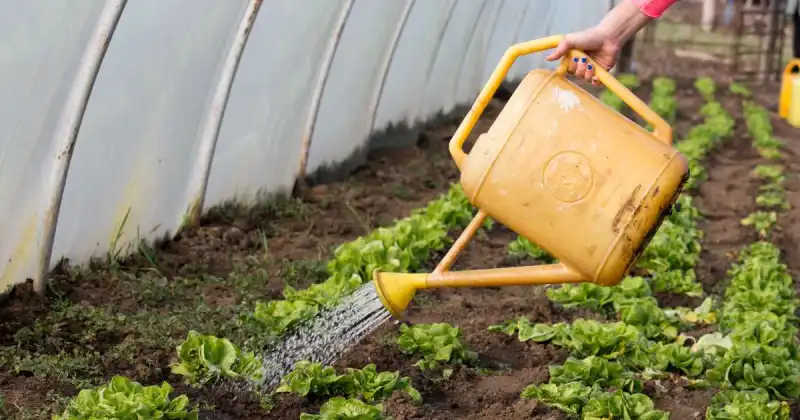
Although watering may sound straightforward and basic, getting it right can be tricky because plants can be surprisingly demanding. In this article, I’ll provide some helpful methods and tips on understanding your garden’s needs, from choosing the most suitable watering method to how best to water different types of veggies in different seasons.
Additionally, I will explain some common watering mistakes to avoid and ways to maintain water quality for your garden. So get ready to see your garden thrive with these fun and friendly watering tips that any humble gardener can benefit from!
Humble Highlights
- Discover the 4 primary ways any grower can instantly determine if their garden needs water so you can ensure your plants continue to produce monster harvests!
- Save water AND money by understanding why it’s essential to water your veggies deeply BUT infrequently to promote optimal root development in your green space.
- Learn why your watering habits should reflect the types of fruits and vegetables you’re growing AND why avoiding these 3 common hydration methods will help set your garden up for massive success throughout the season.
How To Determine When To Water
There are several ways any grower, regardless of experience, can determine when to water their backyard garden, including:
- Visual Cues
- Performing A Soil Moisture Check
- Checking Soil Color
- Determining Plant Weight
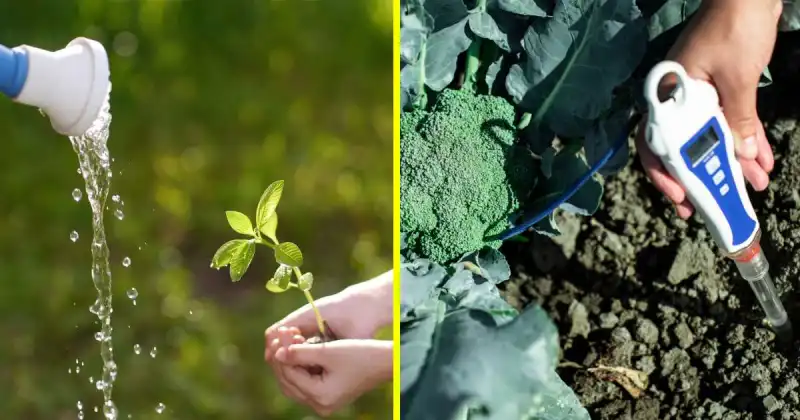
Let’s look at these factors to help you quickly determine if your vegetable plants demand refreshments.
Visual Cues
Wilting or drooping leaves on your plants may indicate that your green friends require water. Another tell-tale sign is if the leaves appear soft and limp and may turn yellow or brown along the edges.
However, it’s important to note that not all plants show wilting as a sign of thirst, so it’s essential to know the specific water needs of each plant. For example, plants sometimes present wilt on warmer days because moisture evaporates faster than the roots can absorb from the soil. 1

Fortunately, short-term wilt has no lasting or harmful consequences for your vegetable plants. It’s only when wilt becomes prolonged that issues may arise. So, be observant of your garden, and address wilt quickly to help keep your plants flourishing.
Besides underwatering, plant wilting may signal drastic temperature changes. For example, peppers enjoy warmer weather and may exhibit wilting if temperatures drop rapidly. Conversely, leafy greens, like lettuce, may wilt if conditions get too warm. So, selecting vegetables that can tolerate your region’s climate is essential.
Perform A Soil Moisture Check
Any grower can perform a simple moisture test in just a few seconds. First, insert your index finger into your garden soil, up to your second knuckle. Placement is critical, as you’ll want to insert your finger a few inches away from the base of your plants so as not to disrupt the root system but close enough to decide if your plants are thirsty. If the soil feels dry, it’s time to water.
Another alternative method for checking soil moisture is to use a moisture meter, which measures the moisture content of the soil. But, again, tools are best for measuring soil moisture as you’ll get a much better water content indicator in real-time.
The following are some of the best tools for the job:
- Moisture meter: A moisture meter measures the moisture content of the soil to help determine if it’s time to water.
- Soil probe: A soil probe collects soil samples from various depths to determine moisture levels.
- Rain gauge: A rain gauge helps measure the amount of rainfall in a given area, helping to determine if additional watering is necessary.
- Tensiometer: A tensiometer measures soil moisture tension, which can help determine when to water plants.
Soil Color: Dark Moist vs. Dry Light Colored
Dark, moist soil suggests it’s retaining moisture, and watering may not be necessary. In contrast, dry, light-colored soil may indicate dryer conditions and needs watering. In this case, the soil has lost its moisture content, and watering will help replenish it.
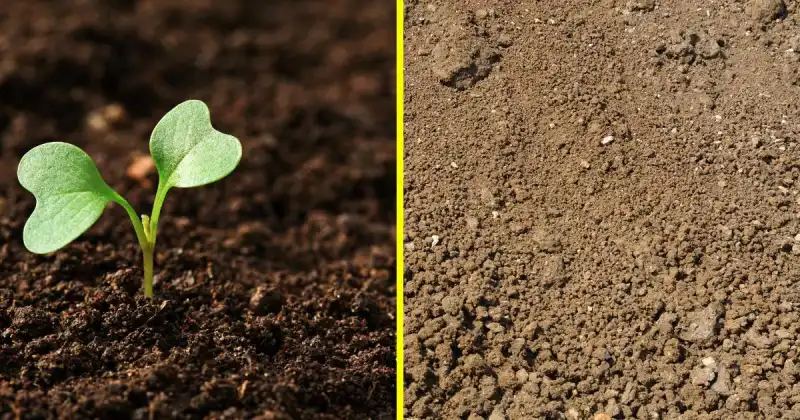
Plant Weight: The Heavier, The Better
If you’re growing your veggies in pots or containers, lifting them can help determine if water is needed. For example, if your pots feel lighter than usual, this may be a sign you need to water. On the other hand, heavier containers indicate that the soil is still moist and doesn’t require watering yet. 2
Fortunately, you can still perform this test if you cultivate your crops in beds. For in-ground plants, the weight of the leaves can indicate whether they need watering. For example, dry leaves may be lighter and feel brittle between your fingers, requiring more water. Conversely, hydrated leaves will feel heavier and more pliable in your hand.
Wet And Wild: Top Tips To Satisfy Your Garden’s Thirst
Believe it or not, you can improve your garden’s overall health by following a few practical watering steps. These tips include:
- Choosing The Right Time Of Day
- Watering Deeply BUT Infrequently
- Using The Right Watering Method
- Mulching To Retain Moisture
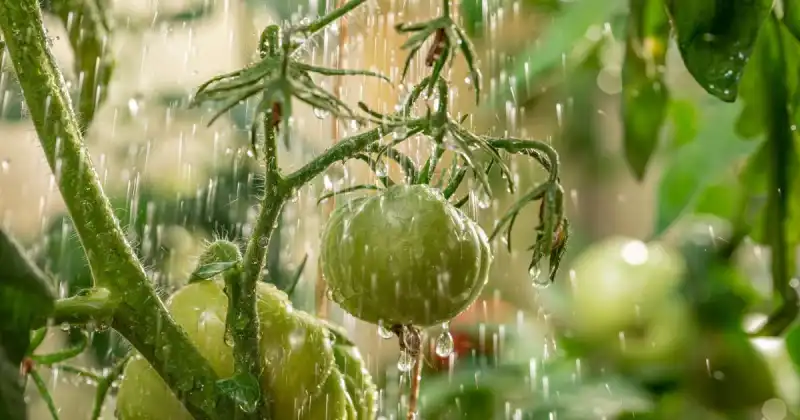
Remember, you can harm your plants if you follow a watering schedule that doesn’t suit your garden’s needs. For example, overwatering can be just as catastrophic as underwatering. Although many growers underestimate the importance of how they water their veggies, being mindful of how moisture impacts the specific plants in your garden can take your green oasis to a more abundant level.
Choose The Right Time Of Day
The best time to water is the first morning when temperatures are more moderate. Not only will your plants enjoy a cool refreshment to greet their day, but you’ll neutralize any harmful effects of quick evaporation if you water in the middle of the afternoon as temperatures rise. 3
I would discourage any grower from watering in the evening. You’ll create a warm and moist environment in your garden, and even if your soil is well-draining, with no evaporation taking place, you’ll invite mold and other fungal diseases to proliferate.
With a loss of vegetable plants, including brassicas, lettuce, and tomatoes, and a fungal infection that took two years to fully clear from my lawn, I highly caution any grower to water at night. You may get away with watering here and there in spring and fall in cooler climates, but again, you’re taking a risk.
Water Deeply And Infrequently
Watering deeply once or twice weekly encourages plant roots to grow deeper and become more resilient throughout their lifecycle. And because your plants only receive a few waterings per week, they become more independent, developing more robust root systems that dive deeper into your soil in search of moisture.
Generally, it’s best to water to a depth of 6-8 inches for most vegetable plants. How frequently you should water depends on your soil and plant type, climate, and weather conditions. Generally, aim to hydrate your garden every 3-4 days.
Watering your plants goes well past maintaining proper garden hygiene. But, when watering wisely, you’ll also be able to save yourself time and money. This video details 10 better strategies to refresh your green space so you can appreciate this seemingly simple garden practice.
Use The Right Watering Method
It’s necessary to use the appropriate watering tools, such as watering cans, drip irrigation, or soaker hoses, to ensure water is delivered directly to the plant’s roots and reduce water waste.
Drip irrigation and soaker hoses are popular, efficient, and time-saving watering methods. Drip irrigation, for example, delivers water slowly and directly to the root zone through tubes and emitters that are surprisingly easy to setup. These systems allow water to seep into the soil at a slower, controlled rate, reducing the risk of water evaporation or runoff. As a result, plants receive the requisite moisture without unnecessarily wasting water.
Similarly, soaker hoses are another irrigation system that delivers water directly to your garden soil. These hoses have small holes or pores, allowing water to seep slowly and directly into the soil around each plant. Again, this minimizes water waste and reduces the likelihood of disease, as the water is delivered directly to the root zone and not splattered on nearby plants and leaves. 4

Watering cans or hand-held hoses are tried and true methods many growers prefer for ease and familiarity. Watering cans and hoses can water individual plants or smaller garden areas, allowing for more precise watering. Avoid using overhead sprinklers, as they can lead to water waste and increase the risk of plant disease, as previously mentioned.
Mulching To Retain Moisture
Mulching around plants helps to reduce water evaporation from the soil surface by providing a protective layer that shields the soil from the sun and wind. This barrier helps keep the soil temperature consistent, cool, and moist, providing a better-growing and inviting environment for your plants. Mulch also helps lessen the likelihood of transplant shock when you place new plants, also called starts, into your grow beds or containers.
When mulch is applied, moisture in the soil penetrates deeper into the ground, where plant roots can access it. By retaining soil moisture, mulch reduces the need for frequent watering, conserving water while saving time and effort. It also helps to suppress weed growth and regulate soil temperature; all big wins for you, the humble gardener.
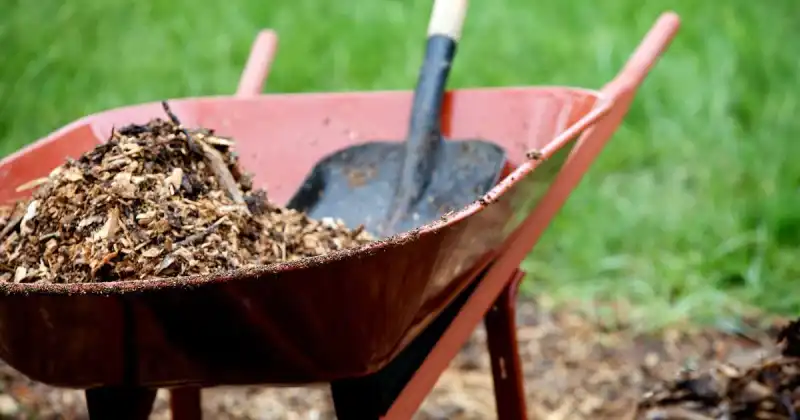
You’re ahead of the game if you already have a backyard compost pile or tumbler. But, if you still need to start one, there’s no better time than the present. You’ll add quality nutrients to your garden while reducing household waste – yay, environment!
The two best times to add compost to your garden beds or pots are about 2 to 3 weeks before your first harvest in the spring and again in late fall after your last harvest.
Watering Techniques For Different Types Of Vegetables
Your garden’s watering habits and techniques depend on the variety of fruits and vegetables you’re growing. The three main types are:
- Leafy Greens
- Root Vegetables
- Fruiting Vegetables
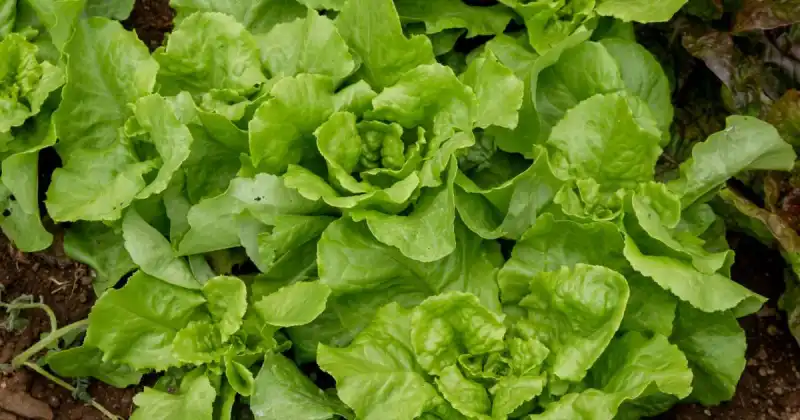
Let’s look at each of these to determine the best watering practices.
Leafy Greens: Water Frequently
When watering leafy greens, it’s important to remember that they have shallow root systems and require more frequent watering than other garden vegetables. Without sufficient and consistent moisture, leaves may wilt or turn yellow, negatively impacting the plant’s growth and development. So, to maintain the health of your leafy greens, like spinach, kale, collard greens, Bok choy, mustard greens, and arugula, the best practice is to water them consistently and avoid letting the soil dry out completely.
When it comes to specific examples of leafy greens, there are many different varieties. As previously mentioned, spinach, kale, and mustard greens are just a few examples of popular leafy veggies found in home gardens. Additionally, lettuce, like romaine, red leaf, endive, and escarole, are commonly grown greens that require frequent watering to maintain their tender leaves.
Root Vegetables: Water Deeply And Consistently
When watering root vegetables, it’s important to remember that they require deep, consistent watering to encourage strong root growth. Unlike leafy greens, which have shallow root systems, root vegetables rely on deep, well-established roots to access the nutrients they require to grow and develop. 5
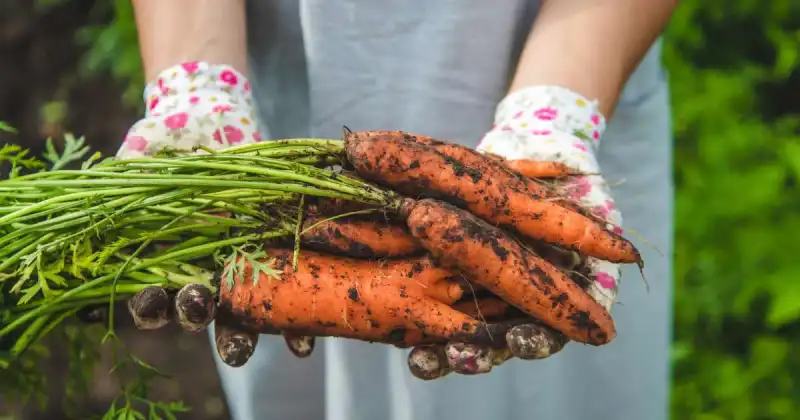
Avoid overwatering root vegetables, as this can cause the roots to become waterlogged and prone to rot. To prevent this unnecessary saturation, allow the soil to dry out slightly between watering sessions, as this encourages roots to grow deeper into the earth in search of water.
Examples of root vegetables include carrots, radishes, and beets. Carrots, in particular, require consistent moisture to prevent them from becoming tough or woody. Radishes, on the other hand, can tolerate some drought and prefer soil that is on the drier side. Finally, like carrots, beets require consistent moisture to develop their characteristic sweet flavor and tender texture.
Fruiting Vegetables: Water Deeply But Infrequently
When watering fruiting vegetables, such as tomatoes, peppers, and cucumbers, it’s crucial to water them deeply and infrequently to encourage strong root growth. Fruiting vegetables tend to have deep root systems, meaning they can access water deeper into the soil. And by watering deeply, you encourage rooting systems to become hardy during dry periods.
Consider watering your fruiting vegetables at the base of the plant, or use a drip irrigation system to avoid getting water on the leaves. Wet leaves can be a breeding ground for fungal diseases, harming the plant’s health by stunting its growth and reducing overall yields.
Tomatoes, for example, require consistent moisture to develop juicy, flavorful fruit. Peppers, conversely, can tolerate some drought and prefer well-drained soil. Cucumbers require lots of water, especially during hot weather stretches, to prevent the fruit from becoming bitter or developing a tough exterior skin.
Common Watering Mistakes To Avoid In Vegetable Gardens
There are several habitual mistakes growers should avoid when watering their gardens, including:
- Overwatering
- Underwatering
- Watering At The Wrong Time Of Day

Overwatering
Overwatering can be common in vegetable gardening, especially for new growers. Its symptoms include yellowing leaves, wilting or drooping leaves, and root rot. Thus, avoiding watering too frequently or too much at once is important. 6
To avoid overwatering, you can:
- Monitor the soil moisture level by inserting a finger into the soil.
- Use a moisture meter to measure soil moisture levels.
- Water deeply yet infrequently to encourage deeper root growth and plant independence.
- Use a well-draining soil mix that allows excess water to drain away from the roots.
- Avoid watering during rainy periods or when the soil is already moist.
Underwatering
Underwatering can be just as harmful to vegetable plants as overwatering. Its symptoms include dry or brittle leaves and slow or stunted growth, and plant death if conditions persist.
To avoid underwatering, you can:
- Monitor the soil moisture level regularly.
- Water deeply and infrequently to ensure water reaches the plant’s roots.
- Use mulch to retain soil moisture and prevent evaporation.
- Water plants in the morning or (if you must) late afternoon when the temperatures are generally cooler.
- Adjust watering frequency depending on your region’s climate and weather conditions.
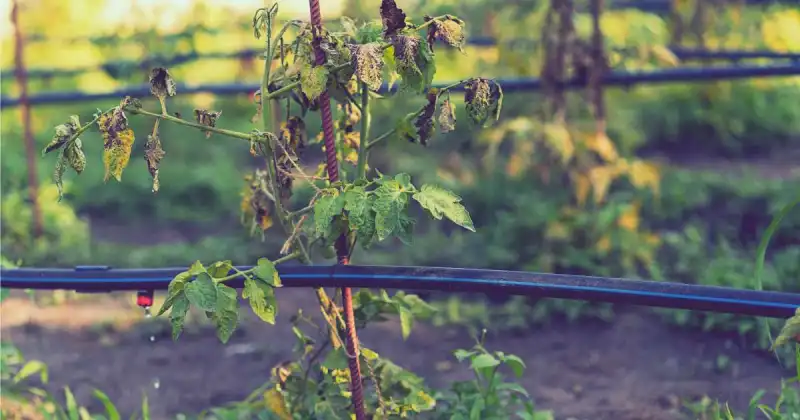
Watering At The Wrong Time Of Day
Watering at the wrong time of day can lead to unnecessary water waste and plant stress. For example, hydrating your veggies during the middle of the day can lead to evaporation and scorched leaves from the hot sun, while watering in the evening can cause damp foliage promoting fungal growth and potentially risking the health, vitality, and overall production of your garden.
To avoid watering at the wrong time of day, you can:
- Water in the early morning when mild temperatures abound and the sun is less intense.
- Use drip irrigation or a soaker hose to deliver water directly to the plant’s roots.
- Avoid watering during windy conditions, as it can cause water to evaporate quickly and splatter on adjacent plants.
- Adjust watering schedules depending on the season and weather conditions in your region.
- Constantly observe your garden, monitor plant health, and modify watering schedules accordingly.
This video below details some great tips for watering your flourishing vegetable plants and some sound hydration philosophies that can help take your gardening efforts to the next level.
How To Water Your Vegetable Garden When You’re Away
When planning a vacation or a trip away from home, it’s essential to consider how your vegetable garden will obtain the water it needs while you’re gone. There are a few ways to ensure your garden remains hydrated even when you’re not there, including:
- Self-Watering Containers
- Watering With An Irrigation Timer And Drip System
- Call A Friend Or Neighbor
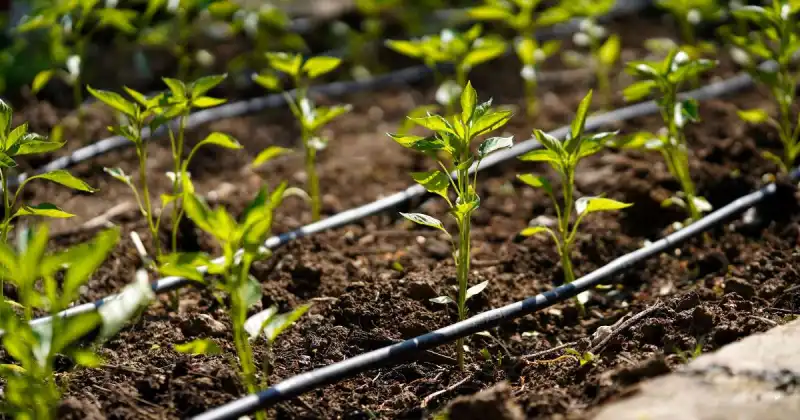
Because nothing is more disheartening than spending time and effort creating and maintaining your garden only to see it drop off a cliff when you take a well-deserved vacation, let’s take a closer look at each option in greater detail.
Self-Watering Containers
Self-watering containers are an excellent option for keeping plants hydrated while away. These containers have a reservoir of water that slowly and systematically releases water to the plant’s roots as needed. These containers come in various sizes and styles and can be used for indoor and outdoor plants. 7
An example of a self-watering container is the EarthBox garden kit, which has a built-in water reservoir of up to 3 gallons. The water is released slowly to the plant’s roots through a wicking system that draws water from the reservoir pool into the soil. This process ensures plants receive the right amount of water and prevents overwatering or underwatering, making hydrating your crops a no-brainer.
Optimize Watering With An Irrigation Timer And Drip System
A drip irrigation system is an efficient way to water your garden automatically while you’re away. It delivers water directly to the plant’s root system, reducing water waste and promoting healthy plant growth.
Irrigation timers can be programmed to water your garden automatically, making it an excellent choice if you’re away for an extended period. You can set the frequency and duration of watering depending on your plants’ needs. In addition, irrigation timers can be used with drip irrigation systems or sprinklers to ensure water is delivered directly to the plant’s roots.
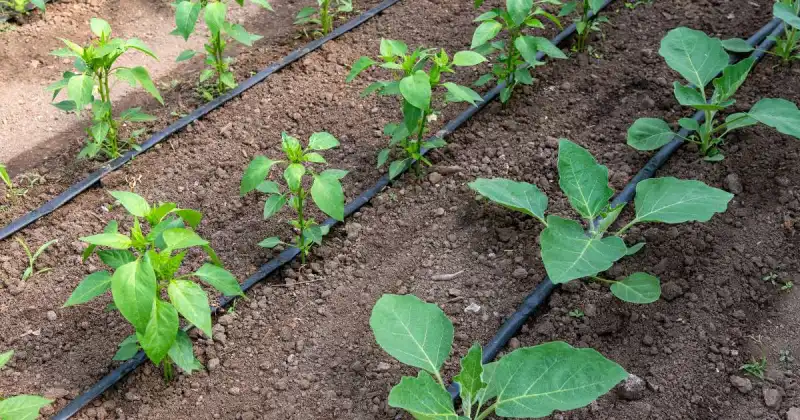
Both the Carpathen and Rain Bird drip irrigation kits have all the necessary components to create a custom irrigation system for your garden layout. Make sure to include the essential tubing, emitters, connectors, a timer, a pressure regulator, and a filter for your growing area. 8
The tubing is placed along the soil surface, and the emitters deliver water directly to the root system. The timer can be programmed to water the plants regularly, reducing water waste and ensuring that your plants receive the right amount of moisture. Here are the general steps for using the kit:
- Plan and measure your garden area to determine the length of tubing and number of emitters you’ll need.
- Lay the tubing along the soil surface, following the desired watering pattern.
- Install the emitters into the tubing at the desired locations.
- Connect the tubing to the water source using a pressure regulator and a filter, which help control the water pressure and prevent clogging.
- Connect the timer to the water source and the tubing, and program it according to your watering schedule preference.
- Turn on the water source to start the drip irrigation system.
- Monitor the system regularly to ensure it’s working correctly and be open to amending the watering schedule or emitter positions as needed.
Call A Friend: Enlisting Help From A Friend Or Neighbor
If you have a willing friend or neighbor, you can ask them to water your garden while you’re away. Provide clear instructions on how much and how often to water the plants and ensure they can access necessary watering tools. Alternatively, you can hire a professional gardener to care for and maintain your green space while away.

Planning and ensuring your plants have enough water to last while you’re away is essential. Depending on the plants’ size and water needs, you may also consider mulching, which can help retain moisture in the soil and reduce the need for frequent watering.
By using these techniques and enlisting help from others, you can enjoy your vacation with peace of mind, knowing that your garden is being taken care of in your absence.
Maintaining Water Quality For Your Vegetable Garden
Several factors may cause harm to your garden if using tap water. Chlorine, commonly used to disinfect tap water, can negatively affect plant growth if present at high levels. Hard water with high mineral content can also build up in the soil, making it difficult for plants to absorb water and nutrients over time. Likewise, lead is a heavy metal from old pipes that may leach into the water supply and saturate your garden.

If using tap water, it’s best to let it sit out overnight, allowing the chemicals to evaporate. Alternatively, consider using a chlorine filter, and use rainwater or filtered water for plants to prevent these issues. Additionally, amending tap water with a water conditioner or filtering method like carbon or reverse osmosis can improve plant water quality. 9
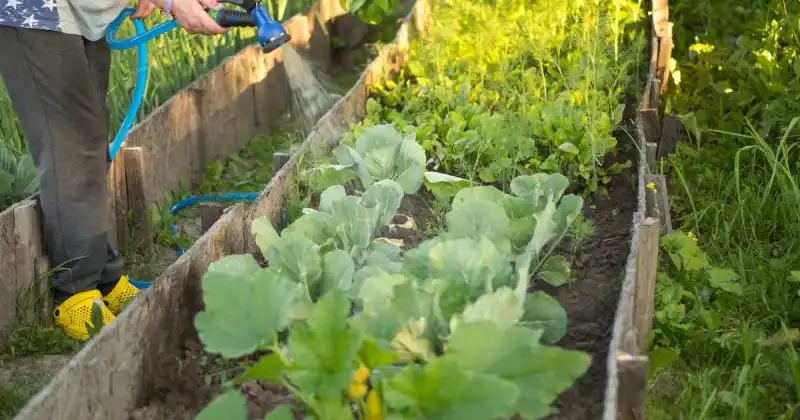
Conclusion
Proper watering is vital in maintaining a healthy garden, sustainable plant growth, and a bountiful season-ending harvest. Understanding soil type, temperature, humidity, and the individual needs of your plants can help determine the appropriate watering schedule and method you choose to implement.
Fortunately, any observant, humble gardener can determine when to water their plants based on several visual and sensory tests, such as performing a soil moisture check, determining soil color, and plant and leaf weight.
Choosing the right time of day to water your food oasis is also good practice. While the morning is best, avoid watering during the middle of the day and early evening when temperatures are highest to prevent water waste and scorched plants. Likewise, consider watering deeply but infrequently to promote healthier, more robust plants. Shallow watering may lead to weaker root systems, which won’t offer your plants optimal growing conditions during the season.
Avoid common mistakes like overwatering or underwatering, and learn the watering needs of the different types of vegetables you cultivate in your space. With the proper technique and planning, you can ensure that your plants receive the moisture they need to flourish. So choose the watering method that suits you, get outside, and start growing fresh and delicious vegetables in your backyard!
What watering methods have you employed that’s brought your garden success? We’d love to hear about it. So meet us in the comment below, and let us know what’s working in your neck of the woods!
SOURCES
- University Of Minnesota, Extension – Watering The Vegetable Garden
- National Library Of Medicine, National Center For Biotechnology Information – Focus On Water
- Iowa State University, Extension And Outreach – When Is The Best Time To Water The Garden?
- Michigan State University, Extension – Smart Watering In The Vegetable Garden
- University Of Florida, Gardening Solutions – Watering The Vegetable Garden
- UC Davis, Department Of Land, Air, And Water Resources – Field Use Of Tensiometers
- Clemson University, Cooperative Extension – Home & Garden Information Center – Watering The Vegetable Garden
- University Of Nevada, Reno Extension – Irrigating (Watering) Your Vegetable Garden
- United States Environmental Protection Agency – Composting


